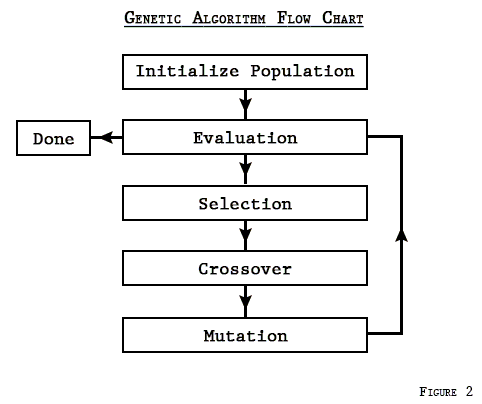This project demonstrates how to implement a Genetic Algorithm (GA) from scratch in Python — a fun way to mimic natural selection and evolve solutions. The goal is to guess a target string using random populations, fitness evaluation, selection, crossover, mutation, and population regeneration.
Why Python? Because I love it.
Hate Python? That's your problem 😛
Make sure to install the only dependency:
pip install numpyA Genetic Algorithm simulates the process of natural evolution to solve optimization problems. The main components are:
- Initialization – Create a random population of possible solutions (strings).
- Selection – Pick the fittest individuals from the population.
- Crossover – Combine parts of parents to produce offspring.
- Mutation – Randomly tweak offspring to introduce diversity.
- Evaluation – Stop if the target is reached or continue to next generation.
- Regeneration – Replace the worst individuals with new ones.
A population is a collection of individuals, called genes. Each gene is a random string.
def create_gen(panjang_target):
random_number = np.random.randint(32, 126, size=panjang_target)
return ''.join([chr(i) for i in random_number])Each gene’s fitness is evaluated against the target string.
def calculate_fitness(gen, target, panjang_target):
matches = sum([1 for i in range(panjang_target) if gen[i] == target[i]])
return (matches / panjang_target) * 100All genes are stored with their fitness in a dictionary:
def create_population(target, max_population, panjang_target):
populasi = {}
for _ in range(max_population):
gen = create_gen(panjang_target)
populasi[gen] = calculate_fitness(gen, target, panjang_target)
return populasiChoose the two best genes (with the highest fitness values):
def selection(populasi):
pop = dict(populasi)
parent = {}
for _ in range(2):
gen = max(pop, key=pop.get)
parent[gen] = pop[gen]
del pop[gen]
return parentMix the selected parents to create two children by swapping halves:
def crossover(parent, target, panjang_target):
cp = round(panjang_target / 2)
p = list(parent)
return {
p[0][:cp] + p[1][cp:]: calculate_fitness(p[0][:cp] + p[1][cp:], target, panjang_target),
p[1][:cp] + p[0][cp:]: calculate_fitness(p[1][:cp] + p[0][cp:], target, panjang_target)
}Introduce diversity by randomly changing characters with a certain mutation rate:
def mutation(child, target, mutation_rate, panjang_target):
mutant = {}
for c in child:
data = list(c)
for j in range(len(data)):
if np.random.rand() <= mutation_rate:
data[j] = chr(np.random.randint(32, 126))
gen = ''.join(data)
mutant[gen] = calculate_fitness(gen, target, panjang_target)
return mutantCheck if the best individual has reached the target (100% fitness):
if bestfitness(mutant) >= 100:
breakReplace the weakest genes in the population with the newly mutated ones:
def regeneration(mutant, populasi):
for _ in mutant:
bad_gen = min(populasi, key=populasi.get)
del populasi[bad_gen]
populasi.update(mutant)
return populasiTarget Word : Hello World!
Max Population : 10
Mutation Rate : 0.2
----------------------------------------------
The Best Fitness Time
----------------------------------------------
HgUewI]W*f` 15.38% 0:00:00.003001
Helpo Worsd! 84.61% 0:00:01.003120
Hello World! 100.0% 0:00:01.994801python genetic_algorithm.pyEdit the config at the top of the file:
target = 'Hello World!'
max_population = 10
mutation_rate = 0.2This project is licensed under the MIT License.
Ardy Seto Priambodo 📧 2black0@gmail.com
- Goldberg, D. E., Genetic Algorithms in Search, Optimization, and Machine Learning
- Mitchell, M., An Introduction to Genetic Algorithms
